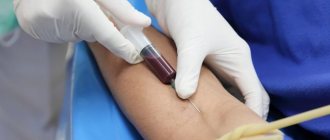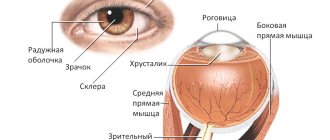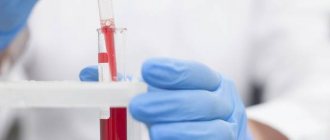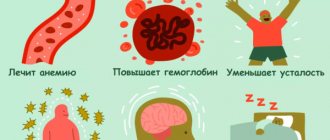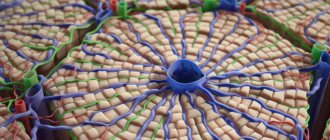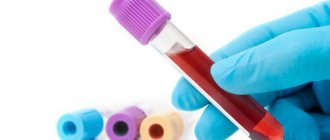What may affect the results
Intense physical activity the day before and even a few days before the test can lead to damage to muscle tissue (the so-called muscle fiber tear) and, accordingly, an increase in ALT levels. For the same reason, analysis taken after injury is uninformative. Taking alcohol and certain medications (antibiotics, nonsteroidal anti-inflammatory drugs, antitumor drugs, oral contraceptives, etc.) often distort the results of the study. The list of medications taken should be discussed with the doctor who prescribed the test, and those that are taken should be discontinued without risk to health.
MEDSI cares about its patients
- Experienced specialists.
They professionally conduct research on biological material, which guarantees diagnostic accuracy - Comfortable conditions for taking the analysis.
You can take the test throughout the day. The results will be available in your personal account - Modern laboratory equipment.
It corresponds to a high European and global level. The laboratory uses equipment from leading manufacturers such as Beckman Coulter, Siemens, Ortho Clinical Diagnostics, Thermo Fisher, Sysmex, BD. All areas of testing and evaluation of biomaterials are equipped with the latest equipment that allows for high-level/high-precision diagnostics - Regular maintenance of equipment and automation of research processes.
All analytical installations are serviced and meet quality standards. All processes are automated as much as possible and built in accordance with LEAN management. This allows the laboratory to control processes, minimize time and errors during analysis - Automation of the process of sorting biomaterials.
Preliminary identification of the biomaterial is carried out in front of the patient. Eliminates the possibility of losing the test tube - The shortest processing time for materials.
They are provided with modern equipment and experienced specialists - There is an opportunity to undergo a comprehensive examination.
This ensures a quick and accurate diagnosis
To make an appointment with a doctor and clarify the conditions for taking the test (including its cost), call +7 (495) 7-800-500. Our specialist will answer your questions and suggest the optimal time to visit the clinic. Registration and payment for services are also possible through the SmartMed application.
ALT (ALT, Alanine aminotransferase, alanine transaminase)
For research, blood is taken from a vein. Usually, AST (AST, Aspartate aminotransferase) is determined simultaneously and the AST/ALT ratio (de Ritis coefficient) is assessed. You can take a blood test for ALT (ALT, Alanine aminotransferase, alanine transaminase) at the nearest INVITRO medical office. A list of offices where biomaterial is accepted for laboratory research is presented in the “Addresses” section. Interpretation of study results contains information for the attending physician and is not a diagnosis. The information in this section should not be used for self-diagnosis or self-treatment. The doctor makes an accurate diagnosis using both the results of this examination and the necessary information from other sources: medical history, results of other examinations, etc.
Rules for preparing and submitting analysis
To obtain objective results, a biochemistry analysis should be done after simple preliminary preparation. The patient must comply with the following conditions:
- for 5–7 days, avoid drinking alcohol-containing drinks, because toxic metabolites of ethanol disrupt the synthesis of proteins and enzymes in the liver.
- Eliminate fatty foods and fried foods from your diet in 2–3 days so as not to create additional stress on the liver and pancreas;
- temporarily stop using medications;
- fast before the procedure for at least 8–12 hours.
Why do you need to take the test on an empty stomach? This is due to the fact that any food changes the composition of the blood, and fats make the plasma cloudy. Test results performed on a full stomach will be inaccurate.
Normal indicators
Units of measurement: U/l.
Reference values
| Floor | Age | AlAT level, U/l |
| Both | < 5 days | < 49 |
| 5 days - 6 months | < 56 | |
| 6 – 12 months | < 54 | |
| 1 – 3 years | < 33 | |
| 3 years - 6 years | < 29 | |
| 6 – 12 years | < 39 | |
| Male | 12 - 17 years old | < 27 |
| > 17 years old | < 41 | |
| Female | 12 - 17 years old | < 24 |
| > 17 years old | < 31 |
Diagnostics
Diagnosis of the disease and the causes of increased ALT is carried out by doctors using all available research methods. In many cases, on an emergency basis, since among them there are life-threatening diseases that lead to disability.
A correctly interpreted biochemical blood test can lead to the right diagnostic path. Thus, there is the concept of the de Retis index, which is the ratio of increased AST and ALT. Its norm is 0.91-1.75.
If it exceeds two, then the reason is in the heart muscle. If it is less than one, then the liver is affected.
In the hospital, a full examination is carried out, which also includes MRI or X-ray CT, extensive blood and urine tests. Invasive methods are also used, such as puncture biopsy and angiography of cardiac vessels. All this allows you to quickly make a correct diagnosis and begin treatment.
What do increased indicators mean?
First of all, when ALT increases, liver problems should be suspected: fatty hepatosis, hepatitis of viral or toxic etiology, liver cirrhosis, liver cancer - primary or metastatic.
The degree of increase in ALT is usually associated with the volume or severity of liver damage, but cannot be considered as a determining factor for the prognosis of the disease. Maximum levels of ALT (and AST) - more than a hundred times higher than normal - are observed in patients with acute viral and drug-induced hepatitis.
A significant increase in alanine aminotransferase can be observed in acute cholecystitis, cholelithiasis, and acute destructive pancreatitis. Another reason may be taking hepatotoxic drugs that damage liver cells.
An increase in ALT levels is detected with extensive injuries to skeletal muscles, severe myositis and muscular dystrophy, and frequent intramuscular injections.
A less significant increase in ALT is recorded in acute myocardial infarction and myocarditis.
Why is the research being conducted?
The liver is the largest organ in the human body, which performs many important functions:
- participates in the digestion process. The liver produces bile, which ensures the change from gastric to intestinal digestion,
- neutralizes the effects of allergens and toxic substances;
- regulates carbohydrate, lipid, protein metabolism;
- removes excess hormones and vitamins from the body;
- synthesizes immunoglobulins and antibodies;
- stores and distributes glucose and glycogen;
- replenishes the supply of certain vitamins.
However, the liver is capable of fully performing these functions only in the absence of pathologies. Liver tests - a biochemical blood test consisting of many laboratory tests - allow you to assess the condition of the organ.
The test is rarely carried out as a preventive measure. Most often, tests are prescribed if the doctor suspects that the patient has liver problems. For example, a referral for a study can be issued to those who have symptoms characteristic of liver pathologies - yellowness of the skin and sclera, pain in the right hypochondrium, sudden weight loss, nausea, vomiting, and the appearance of a sour-bitter taste in the mouth. In addition, the study is used to track the results of treatment of liver pathologies.
The indicators included in the liver tests reflect not only the functioning of the liver, but also other organs and systems - the heart, kidneys, intestines, thyroid gland, skeletal muscles. Therefore, the study may also reveal disorders not related to liver function.
Transcription of analyzes online.
cost of service: 500,300 rubles
Order
General practitioner Khanova Irina Ivanovna will interpret your tests during an online call in the Zoom or WhatsApp application.
- detailed explanation from the general practitioner.
- an alternative opinion from a competent specialist in interpreting the analyses.
- the opportunity to ask questions to the doctor regarding test results.
Transaminases
It is known that in the body there are a huge number of different biologically active substances that take part in certain reactions and have very high selectivity and specificity. These are enzymes, also called enzymes. The presence of enzymes makes it possible to speed up the occurrence of chemical reactions many hundreds and thousands of times.
In biochemistry, there are several groups of enzymes. So, in our body there are oxidoreductases. These enzymes assist biological oxidation such as proton transfer. There are hydrolases that break down intramolecular bonds. For example, these enzymes are involved in the breakdown of esters and fats. The body contains isomerases that catalyze the mutual transformations of different isomers of the same molecule. Finally, enzymes are represented in large quantities by transferases. These enzymes catalyze the transfer of various groups of atoms from one molecule to another. Their common name is built from the name of the donor molecule, then the name of the transferred group is added, and then the ending is added: transferase.
Thus, ALT or alanine aminotransferase transfers the NH2 amino group from the alanine amino acid, and AST, or aspartate aminotransferase, transfers the same NH2 amino group from the aspartate amino acid. Why are these processes needed, and where do these transaminases, that is, transporters of amino groups that carry out transamination, occur?
Decrease in values (in dynamics)
It is possible to predict a favorable outcome of the disease against the background of treatment by determining, albeit slowly (over several weeks), but a decrease in ALT levels to normal values. If the ALT concentration decreases too quickly, and at the same time there is still an increase in blood bilirubin (hyperbilirubinemia), then the prognosis for the patient is unfavorable.
In women, alanine aminotransferase activity is slightly lower than in men. During pregnancy, ALT decreases without damaging parenchymal cells - the condition is due to the functional “restructuring” of the body of the expectant mother.
Sources:
- Marc S Orlewicz, MD. Alanine Aminotransferase. — English-language database of current medical data Medscape.
- Data from the independent laboratory Invitro.
- Data from Helix laboratory.
- A.A. Kishkun, Doctor of Medical Sciences, Prof. Guide to laboratory diagnostic methods, - GEOTAR-Media, 2007.
Aspartate aminotransferase, AST
This enzyme is normally found inside cells and rarely enters the bloodstream, only when they are damaged. AST is found in the myocardium, liver tissue, striated skeletal muscle, nervous tissue and kidneys. This enzyme is found to a much lesser extent in the pancreas, lung tissue and spleen.
For comparison, we can point out that in the myocardium the activity of this enzyme is 10,000 times higher than its activity in blood serum. Therefore, an increased AST value is one of the earliest and most reliable markers of cardiac muscle necrosis during myocardial infarction. Of course, the specificity of this indicator is not very high. Indeed, in addition to the heart, this enzyme is contained in the liver, and if the patient at this time has decay of liver cells, and he has hepatitis in an active form, then the test for myocardial infarction will be false. Therefore, AST also belongs to the liver enzymes.
If we talk about the early diagnosis of myocardial infarction, then the concentration of this enzyme in the blood serum reliably increases approximately 7 hours after the first painful attack, indicating the development of a heart attack. A day after the softening and necrosis of the heart muscle, the concentration of this transaminase in the blood reaches a maximum, and the value returns to normal after about 5-6 days.
Interestingly, there is an indirect connection between the extent of the necrosis zone and the increase in enzyme concentration. This is not surprising: after all, the larger the necrosis zone, the more enzyme gets from myocardiocytes into the peripheral bloodstream. Therefore, it is believed that if the value of this enzyme in a person is increased 5 times, then this may well be a biochemical sign of myocardial infarction, but if the concentration of this enzyme exceeds the norm by 15 times higher, then this indicates a severe course, an extensive area of necrosis, and possible unfavorable outcome.
Naturally, it is impossible to make a diagnosis of myocardial infarction only on the basis of one biochemical study. This means that if the enzyme increased slightly during a heart attack, or did not increase at all, then it is not at all necessary that there will be a favorable outcome.
Read more about Aspartate aminotransferase in our articles: “Aspartate aminotransferase: What is AST? normal and elevated levels” and “Aspartate aminotransferase (AST) is increased, what does this mean? ".
What about ALT? During a heart attack, the concentration of this enzyme in the blood increases slightly. Under what conditions does an increase in ALT concentration occur, and where is it (this transaminase) located?
